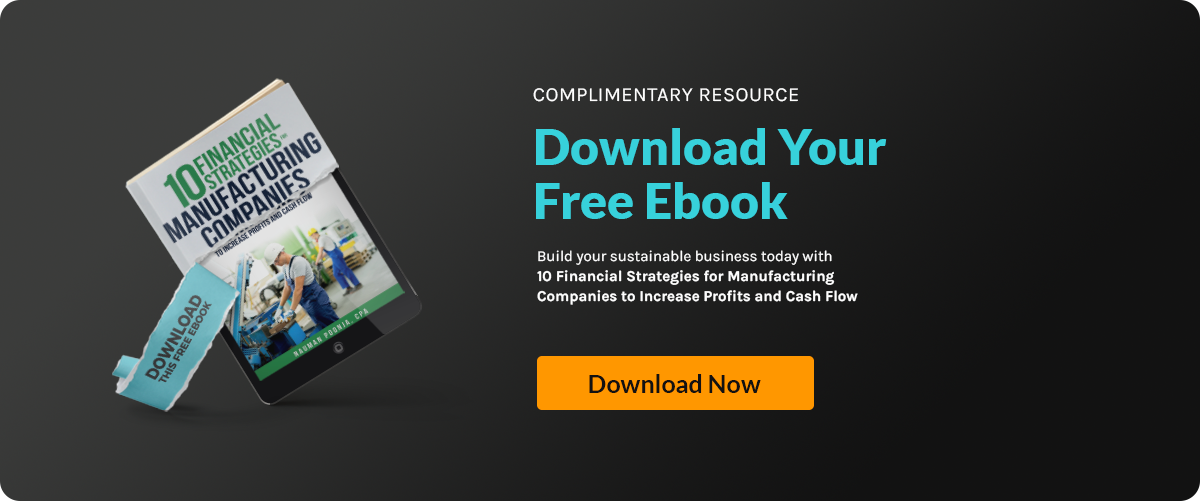Every successful business starts each year with a clear vision — but executing on that vision...
Financial KPIs: The Numbers That Help Your Business Succeed

If you want your business to grow and stay strong, you need to keep an eye on the right numbers. These numbers are called Financial KPIs—Key Performance Indicators. Think of them as a scoreboard that shows how well your business is doing.
When you track the right KPIs, you can make smarter decisions, fix problems early, and plan for the future. In today’s fast-moving world, not knowing your numbers can slow your business down.
Let’s look at the most important financial KPIs every business should know and follow.
What Are Financial KPIs?
Financial KPIs are numbers that show how your business is performing. They help you track your income, costs, cash flow, and profits. They turn big goals—like growing your business—into smaller targets you can measure. Think of KPIs as the vital stats for your business. These metrics provide insights into the underlying financial and operational strength of your company. KPIs can be based on any kind of important data—whether it’s sales per square foot in your store, the click-through rate on your website ads, or the number of accounts each salesperson closes. By keeping an eye on these key numbers, you get a clear snapshot of what’s working and where you might need to adjust.
When you understand your KPIs, you can connect your daily work to your long-term plans. This is very important, especially when strong financial planning helps you stay ahead.
Top Financial KPIs Every Business Should Know
1. Revenue Growth
This shows how much your sales are growing over time. It’s one of the easiest ways to see if your business is getting bigger.
Tracking this helps you understand what’s working—like a new product or marketing effort—and what’s not. If sales slow down, this KPI gives you an early warning. Most businesses calculate revenue growth as a percentage increase (or decrease) in net sales from one period to the next. You might compare this year’s sales to last year’s, or look at quarter-to-quarter changes to spot trends.
Formula:
(Current period net sales – Previous period net sales) / Previous period net sales x 100
A positive percentage means your sales are rising—a sign your business is expanding. A negative number means sales are shrinking, which could signal it’s time to make adjustments. Tracking revenue growth regularly helps you react quickly and keep your business on the right track.
2. Gross Profit Margin
This tells you how much money you keep after paying for the products or services you sell. It’s shown as a percentage of your sales.
A healthy profit margin means you're controlling costs and pricing well. It also helps your business grow and stay strong.
Gross profit margin is an important measure of how efficiently your core business is running. It looks at your net sales (what you actually earn from customers) and subtracts the cost of goods sold (COGS)—that’s the direct cost of producing what you sell. This gives you your gross profit.
To make it easier to spot trends and compare your business with others, gross profit is shown as a percentage of your sales. Here’s how you figure it out:
Gross profit margin = (Net sales – COGS) ÷ Net sales × 100%
Tracking this percentage over time helps you see if you’re keeping costs in check and whether your pricing is working for you. If your margin starts shrinking, it’s an early sign you may need to cut costs or adjust your prices.
3. Operating Cash Flow
Operating cash flow (OCF) is the money your business generates from everyday operations, like selling products or services. Unlike profit, it shows the actual cash available to run your business, making it a clear indicator of financial health. Strong OCF means your business can support itself without borrowing, which is essential for long-term stability.
A key way to measure this is the Operating Cash Flow Ratio, which tells you whether your business can cover short-term obligations using cash from daily operations. Calculate it by dividing your operating cash flow by your current liabilities (bills and debts due within a year). A ratio above 1 means your business generates enough cash to pay its short-term debts, while a ratio below 1 indicates you may need savings or loans to cover expenses. Regularly checking this ratio helps you spot cash crunches early and ensures your business runs on real, reliable cash.
4. Margin
Net profit Margin shows how much money you actually keep after paying all your costs, including taxes and interest. A high net profit margin means your business is healthy. You can handle tough times, invest in growth, and reward owners or investors.
Wondering how efficiently your company turns sales into operating profit? That’s where Return on Sales (sometimes called operating margin) comes in. This KPI shows what percentage of your sales revenue becomes profit after paying costs like materials and everyday expenses—but before interest and taxes.
To find your ROS, divide your operating profit (earnings before interest and taxes) by your net sales, then multiply by 100 to get a percentage.
A higher ROS means you’re running a tight ship—turning more of your sales into actual profit. It’s a quick way to spot if your business operations are healthy or if it’s time to look for waste or inefficiencies.
5. Current Ratio
This tells you if your business can pay its short-term bills with the money and assets you have right now.
To get it, divide your current assets by your current debts. A number over 1 is usually good. It means you can pay what you owe. But if it’s too high, you might not be using your money well. The current ratio looks at your company’s short-term liquidity—basically, how easily you can cover all the bills and debts due within a year.
Current assets are things you can turn into cash within a year, like cash itself, accounts receivable, and inventory.
Current liabilities are what you owe in the next year—think accounts payable and other short-term debts.
6. Return on Equity (ROE)
This shows how much profit you’re making from the money your owners or investors put into the business.
A high ROE means you're using that money wisely. This is very important in industries where strong performance matters.
Choosing the right KPIs like ROE can sometimes feel overwhelming, because not every business is the same. The best KPIs for you depend on your business goals, your industry, and how your company runs day to day. Some KPIs, such as accounts receivable turnover or the quick ratio, are helpful for almost any business. Others depend on your field—manufacturers, for example, need to pay close attention to inventory levels, while service-based businesses often track revenue per employee to measure efficiency.
By understanding what’s most relevant to your business, you make sure your efforts are focused on what truly drives results.
7. Accounts Receivable (AR) Ratio
This metric measures how quickly your customers pay their bills. It compares what’s owed to you but still within payment terms to your total sales on credit. A higher AR ratio is a good sign—it means most of your customers are paying on time, so your business has reliable cash coming in. But a low AR ratio? That’s a red flag. It signals that customers aren’t paying quickly, and that can lead to cash flow headaches down the road.
When your AR ratio drops, it often means money you expect isn’t arriving on schedule, making it harder to cover your own expenses or invest in growth. Keeping your AR ratio high helps you avoid those stressful cash crunches and supports smoother operations.
Going Deeper: Extra KPIs for Growing Businesses
Customer Acquisition Cost (CAC) vs. Customer Lifetime Value (CLV)
- CAC is how much it costs to get a new customer. CLV is how much money that customer brings in over time.
- If CLV is much higher than CAC, that’s great. It means your marketing is working, and customers are bringing in more value than they cost.
Debt-to-Equity Ratio
- This shows how much debt your business has compared to how much money the owners put in.
- A balanced number means you're managing your money well. It also builds trust with banks and investors
The debt-to-equity ratio measures your company’s borrowing and overall leverage by comparing total debt (including both short-term and long-term liabilities) to the total value of owners’ equity. A high ratio means your business relies more heavily on borrowed money, which isn’t necessarily bad—as long as you’re using those funds to generate solid profits and healthy cash flow.
Understanding this ratio helps paint a clearer picture of your company’s financial health and risk tolerance, making it easier to have informed conversations with lenders and investors alike.
A high debt-to-equity ratio means your business relies more on borrowed money. This isn’t always risky if the funds are helping you generate more sales, higher profits, and strong cash flow.
As long as you’re able to cover your debt payments and keep your cash flow healthy, having more leverage can help you grow faster without giving up ownership.
Interest Coverage
Interest coverage shows how easily your business can pay the interest on its loans or other debts.
It does this by comparing your earnings before interest and taxes (EBIT) to your interest costs. If your interest coverage number is high, it means you have more than enough earnings to cover your interest payments—this reassures banks and investors that you’re a low-risk borrower.
The formula is simple:
Interest coverage = EBIT ÷ Interest expense
Tracking this KPI helps you see if your profits are enough to handle your debt—and gives you an early warning if things start to tighten.
EBITDA Margin
- EBITDA stands for Earnings Before Interest, Taxes, Depreciation, and Amortization. This number shows how much profit your business makes from its main work, before other costs are added.
- It’s a useful way to compare your business to others in your industry.
KPIs for Specialized Business Functions
Some businesses find it helpful to go even deeper, tracking KPIs for areas like inventory, sales, receivables, payables, or human resources. Here’s how you can get more specific:
- Inventory Turnover: Measures how quickly you’re selling and replacing stock. This helps spot when products are gathering dust on the shelves—or moving faster than you can restock.
- Sales Conversion Rate: Tells you what percent of leads actually become paying customers. A high rate means your sales team is closing deals efficiently.
- Days Sales Outstanding (DSO): Shows how long it takes customers to pay you after a sale. If this number creeps up, you might need to tighten up your collections process.
- Days Payable Outstanding (DPO): Reflects how long you wait before paying suppliers. A larger number might help cash flow, but pay too slowly, and it can strain vendor relationships.
- Employee Turnover Rate: Keeps tabs on how fast employees are leaving and being replaced. High turnover can signal issues with workplace culture or hiring practices.
These KPIs let you look beneath the surface, so you can spot strengths and weaknesses in different areas of your business. While tracking these numbers by hand can feel like a part-time job, tools like QuickBooks, Xero, or Tableau make it easier to organize everything—from dashboards to detailed reports—in just a few clicks.
Days Sales Outstanding (DSO)
DSO measures how long, on average, it takes for customers to pay their invoices. A lower DSO indicates quicker payments and healthier cash flow, while a higher DSO may signal collection issues. Tracking DSO helps you identify trends early and adjust your payment processes to ensure timely cash inflow.
Cash Conversion Cycle (CCC)
The CCC shows how fast your business can turn inventory investments into cash. It combines Days Inventory Outstanding (DIO)—how long products sit in inventory—with DSO. A shorter CCC means faster cash recovery, allowing you to reinvest or cover expenses without relying on external financing.
Days Inventory Outstanding (DIO)
DIO tracks how long inventory stays before being sold. Lower DIO indicates efficient inventory turnover, freeing up cash and reducing risks of unsold or outdated stock.
Days Payable Outstanding (DPO) & Accounts Payable (AP) Turnover
DPO measures how long it takes your business to pay suppliers. A higher DPO improves cash retention, while a lower DPO can strengthen supplier relationships. AP turnover shows the frequency of payments to suppliers; together, these metrics help optimize cash flow and maintain healthy supplier relations.
Interest Coverage Ratio
This ratio evaluates your ability to pay interest on debts. A higher number shows strong earnings relative to interest obligations, signaling responsible debt management and making it easier to secure favorable financing.
Fixed Asset Turnover Ratio
This metric indicates how effectively your business uses property, plant, and equipment to generate sales. A higher ratio reflects efficient use of assets and better revenue generation from investments in equipment or facilities.
Payroll Headcount Ratio
This ratio measures HR or payroll efficiency by showing how many employees each HR professional supports. A balanced ratio ensures operational effectiveness without overloading your team.
Budget Variance
Budget variance tracks differences between planned and actual financial performance. Favorable variance means spending less or earning more than planned, while unfavorable variance signals the opposite. Monitoring this helps catch deviations early and maintain control over finances.
Burn Rate & Gross Burn Rate
Burn rate indicates how quickly your business spends cash to cover expenses. A high burn rate can signal urgency for funding or cost control, while a lower rate shows sustainable spending. Gross burn rate calculates the runway you have before cash runs out, helping plan funding and operational strategies.
Reducing Invoice Processing Costs & Supplier Practices
Streamlining accounts payable through automation, going paperless, outsourcing, standardizing procedures, or negotiating vendor terms can reduce costs and free up cash. However, consistently delaying payments can strain supplier relationships, so balance cash flow needs with maintaining strong credit terms and goodwill.
By regularly monitoring these metrics, businesses can make informed decisions, maintain healthy cash flow, optimize operations, and plan for sustainable growth.
Why Financial KPIs Matter More Than Ever
In today’s fast-changing economy, tracking your financial KPIs can give you a big advantage. When you keep an eye on these numbers, you can react quickly, lower costs, and grow smarter.
Consistently tracking KPIs also supports financial oversight and strategic initiatives, helping leadership stay focused on what matters most for long-term growth. They help turn data into action, so your business stays on track—even when the market changes.
How Real-Time KPIs Help Your Business Stay on Track
One of the biggest benefits today’s financial software brings is real-time KPI tracking. When your key numbers—like sales, cash flow, or margins—update automatically, you always know exactly where your business stands. This means:
- Immediate clarity: You see trends and issues right away, instead of waiting for end-of-month reports.
- Faster decisions: Spot red flags early, react quicker, and take action before small problems become big ones.
- Clearer goals: Real-time data keeps everyone focused. Teams stay motivated because they can watch progress as it happens.
Instead of getting buried in spreadsheets, you and your staff can spend more time actually using your numbers to drive better results. In short, real-time KPIs help your business stay nimble, organized, and moving forward.
Best Ways to Track Your Financial KPIs
Want to make the most of your KPIs? Try these tips:
- Set clear goals: Make sure every KPI connects to something important—like growing sales or improving profits.
- Use financial software: Automate your reports to save time and avoid mistakes.
- Check often: Review your KPIs monthly, quarterly, and yearly.
- Compare to others: See how your numbers match up with similar businesses.
- Take action: Use your KPIs to make smarter choices—not just to fill out reports.
But before you dive in, it’s important to pick the right KPIs for your business. Not all KPIs matter to every company. Start by looking at your goals, business model, and daily operations. Some KPIs are useful for nearly everyone—like accounts receivable turnover or the quick ratio. Others depend on your industry. For example, manufacturers should keep a close eye on inventory status, while service-based businesses might focus on revenue per employee to measure efficiency.
By choosing KPIs that truly fit your business—and not just what’s popular—you’ll get insights that actually help you grow.
Final Thoughts: Use KPIs to Grow with Confidence
Financial KPIs are more than just numbers. They’re tools that help you guide your business. They link your big dreams to real results.
When you learn to track and use them well, you’ll make better choices, avoid problems, and stay on the path to success.
Want to get serious about your business growth? Contact Accounovation today. We’ll help you build a custom KPI plan to keep your business moving forward.







